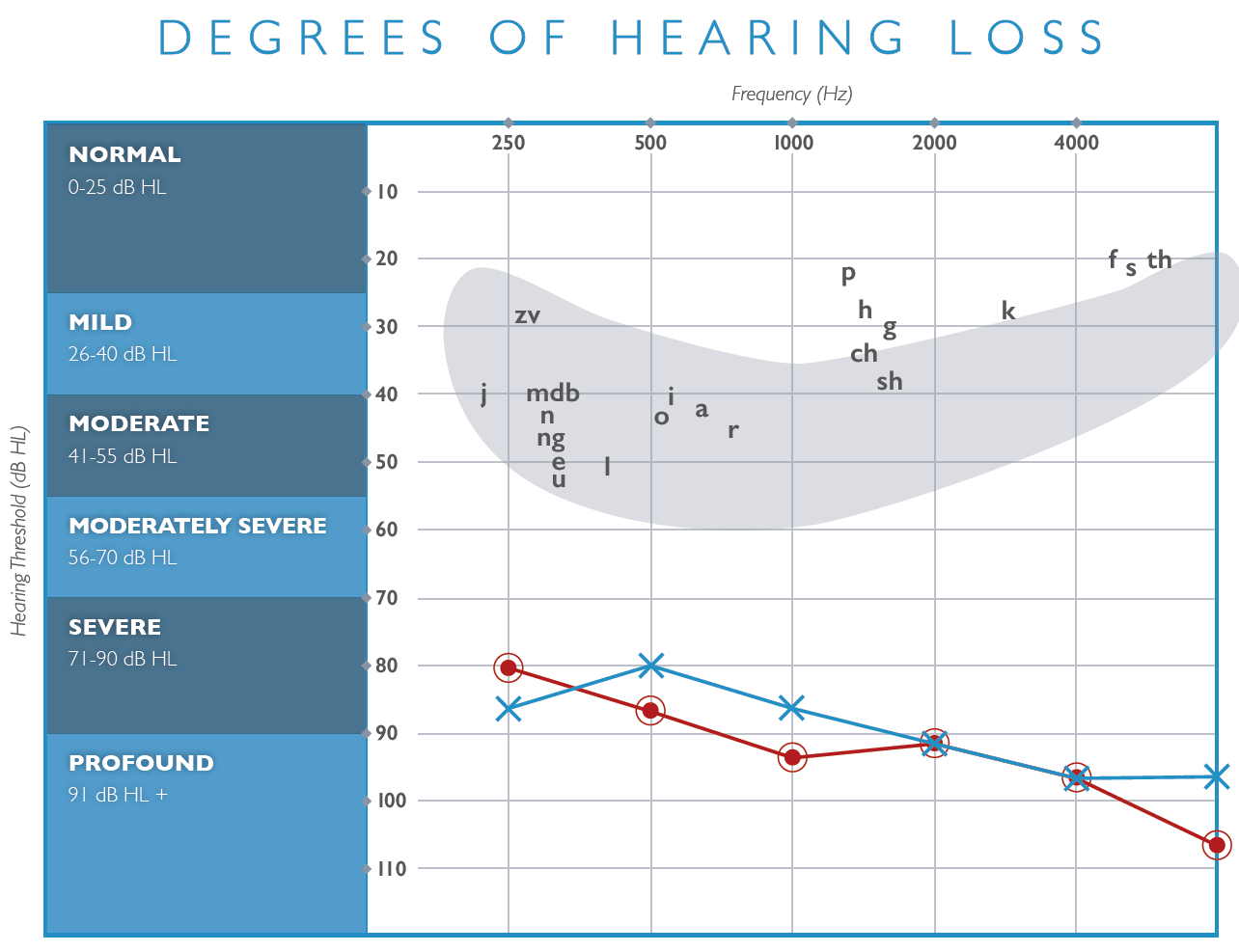The other day I was chatting with my husband and was having a little trouble hearing him even though we were in the same room. While focusing on our conversation, I suddenly picked up the sound of our clothes dryer (2 floors away) chiming to signal the end of its cycle. It got me thinking about why we might hear and process certain sounds so clearly while others – even when right next to us – might be a bit more difficult. To help answer this phenomenon, I’ve brought in an audiology expert, Dr. Thomas Powers, for a question and answer on this experience.
 Dr. Powers, let’s start with some basics. Can hearing loss affect just certain frequencies?
Dr. Powers, let’s start with some basics. Can hearing loss affect just certain frequencies?Yes, hearing loss can affect just certain areas of our hearing abilities. To better understand how our hearing system works, let's take a quick look at the audiogram (see below) we use to show hearing capabilities at differing levels of hearing loss. On the X (horizontal) axis, you see the frequencies from 250 to 8000 Hertz. Frequency is how much a sound wave vibrates and determines a higher or lower pitch. On the Y (vertical) axis, we see the level in decibels from zero to 120. Decibels measure sound intensity, or how loud something is.
We usually think of low frequency hearing loss affecting the left side of the graph, which impacts how you hear vowels such as “e” and “u”. Hearing loss affecting high frequency hearing will impact the ability to hear consonants, such as “z”, “s”, and “th”, as shown on the right side of the chart. For example, the words cat, rat, mat, fat, all differ only by the initial consonant, and if that is mis-heard, the meaning of the sentence can be quite different.
When we think of human voice versus a musical tone, we are talking about a complex signal such as speech in the human voice and a simple signal such as a musical tone from an instrument like a piano or a flute. These musical notes occupy a small space along the frequency continuum as shown on the audiogram chart above. Our brain is primarily focused on finding human voices, as that is the basis of our communication between our friends and family. However, individuals like musicians have trained their brains to be particularly focused on the frequency changes of musical notes due to their profession.
Human voices can spread across the entire frequency spectrum - even as we speak just one sentence. Everyone occupies a different region on the frequency continuum, with female or children’s voices focused in the high frequency area and male voices more focused in the low frequency area. This is related to the fundamental pitch of male versus female versus children's voices. For those with high frequency hearing loss, it is often more difficult to hear female and children’s voices than a male voice.
 Does focus have anything to do with what sounds we pick up?
Does focus have anything to do with what sounds we pick up?Yes, our ability to focus on a particular sound can be influenced by our perception of safety. For example, if we are having a conversation with a friend or colleague and a fire alarm or other emergency signal is perceived, our brain will prioritize that signal because it has learned it is more important than a routine conversation. This explains why hearing care professionals often hear the complaint that someone does not hear their spouse talking but may hear another noise in their surroundings such as the TV, the washing machine, or another environmental sound.
Once someone has had a hearing test and we know the nature of their hearing loss - whether it is more high frequency or involving low, mid, and high frequencies - we can then program specific amplification factors into the hearing aid that will help compensate for the areas of reduced hearing. Today's modern hearing aids allowed tremendous flexibility in programming the amplification necessary to the specific needs of that wearer. They can also be tailored to other features such as background noise reduction or directional microphone technology. Even if the hearing loss is mild, a person may have more significant difficulty understanding in background noise and require greater directional focus to understand those in front of them and reduce the background noise such as in a restaurant.
Well, there you have it! Hearing not only involves the sounds we hear but also the way we perceive and prioritize sounds. If you are experiencing difficulty hearing, don’t hesitate to reach out to your local licensed hearing professional today. They can help you pinpoint your specific hearing loss and provide guidance on treatment solutions, including h